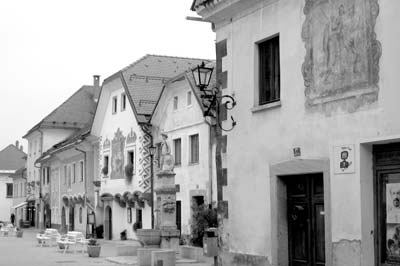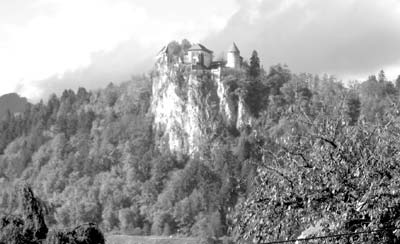Driving in Slovenia
Although my wife, Paula, and I have traveled extensively, we prefer using public transit during our trips, allowing us to avoid the stress of driving in strange locales and the hassle of parking in cities. Slovenia, however, is best toured by car, since most of its attractions are not easy to get to by rail or bus.
So for our October ’05 trip to Slovenia (Feb. ’07, pg. 72) we rented a Lancia Musa from Hertz (800/654-3001 or visit www.hertz.com). A week’s rental with unlimited mileage cost $560. The CDW insurance would have cost an additional $100, but our credit card provided that coverage.
This car is a practical hatchback that can hold three adults with a trip’s worth of luggage. It was highly maneuverable, making it fun to drive over twisty, hilly roads and easy (with a little practice) to park in tiny parking spaces in the city. It’s not the vehicle for passing sports cars on the expressway; otherwise, it’s fine, even on steep mountain roads.
Our Musa had a quirky transmission that, if I started the car just right, was an automatic. More often than not it defaulted to a manual-shift mode (with no clutch pedal to operate), which was not always a bad thing.
We picked up our car from Hertz at Marco Polo International Airport near Venice, Italy, and drove for two hours on the autostrade to the Slovenian border at Fernetti (near Trieste). After fewer than five minutes of waiting in traffic at the border, we were waved through at the sight of our American passports. It was like crossing the U.S. border into Canada pre-9/11.
It was a little more complicated on our return to Italy. The first border crossing we went to in Nova Gorica was only for E.U. citizens. A friendly Italian official directed us to the nearest appropriate border crossing, where our passports were checked and we were allowed back into Italy. At no time did anyone request to see the International Driving Permits that we had obtained just prior to our trip.
Slovenia is a great country for a first-time driver in Europe. The roads appeared well maintained, and traffic was rarely heavy. One technique that worked well for me was to drive as if all pedestrians and all other vehicles had the right of way.
I found the Slovenian drivers to be better disciplined and more law-abiding than Americans. There were a few impatient drivers on the expressways but nothing like what we experienced on Italy’s autostrade. In a week of driving in which I certainly was exasperating other drivers, no one blew a car horn or made any rude hand gestures at me (at least while we were in Slovenia; Italy was a different story). Making the driving even more pleasant, billboards and litter were virtually nonexistent.
You can find construction updates, toll information and a few maps at Slovenia’s motorway website, www.dars.si.
Most sections of the expressways were toll roads with tolls payable in cash or with a credit card or an ABC card (the Slovenian version of EZ-pass). Toll stations had signs in English (unfortunately, the only place we saw English highway signs). Toll charges were reasonable.
Once off the expressways, most roads were the typically narrow European roads with no shoulders and lots of curves. In villages and small towns the roads sometimes wound between buildings separated by narrow gaps that made me fear for our car’s side mirrors. These rural roads were surprisingly smooth and, frankly, fun to drive as they twisted over hills and mountains.
Driving in Ljubljana, Slovenia’s capital and the country’s biggest city, wasn’t particularly stressful. The primary challenge was that many streets changed names every two to three blocks, making it difficult to navigate.
And it was navigation that was our biggest challenge throughout Slovenia. Once we left the expressways, highway number and direction signs (e.g., “north”) were notable by their absence. We did eventually determine that milestones on some roads included the highway number. Otherwise, highway numbers were seen only on maps.
Typically, the only directional signs to be found would point to the next small town, often a village too small to be on our map. At times we were reduced to the old “follow your nose” technique, which, thankfully, worked surprisingly well. We only had to stop for directions once.
My advice is to get the most detailed map you can and study it before your trip. Then you’ll do fine and be able to relax and enjoy Slovenia. And if you do take some wrong turns, you may get to see a few more scenic villages.
STEPHEN O. ADDISON, Jr.
Charlotte, NC


